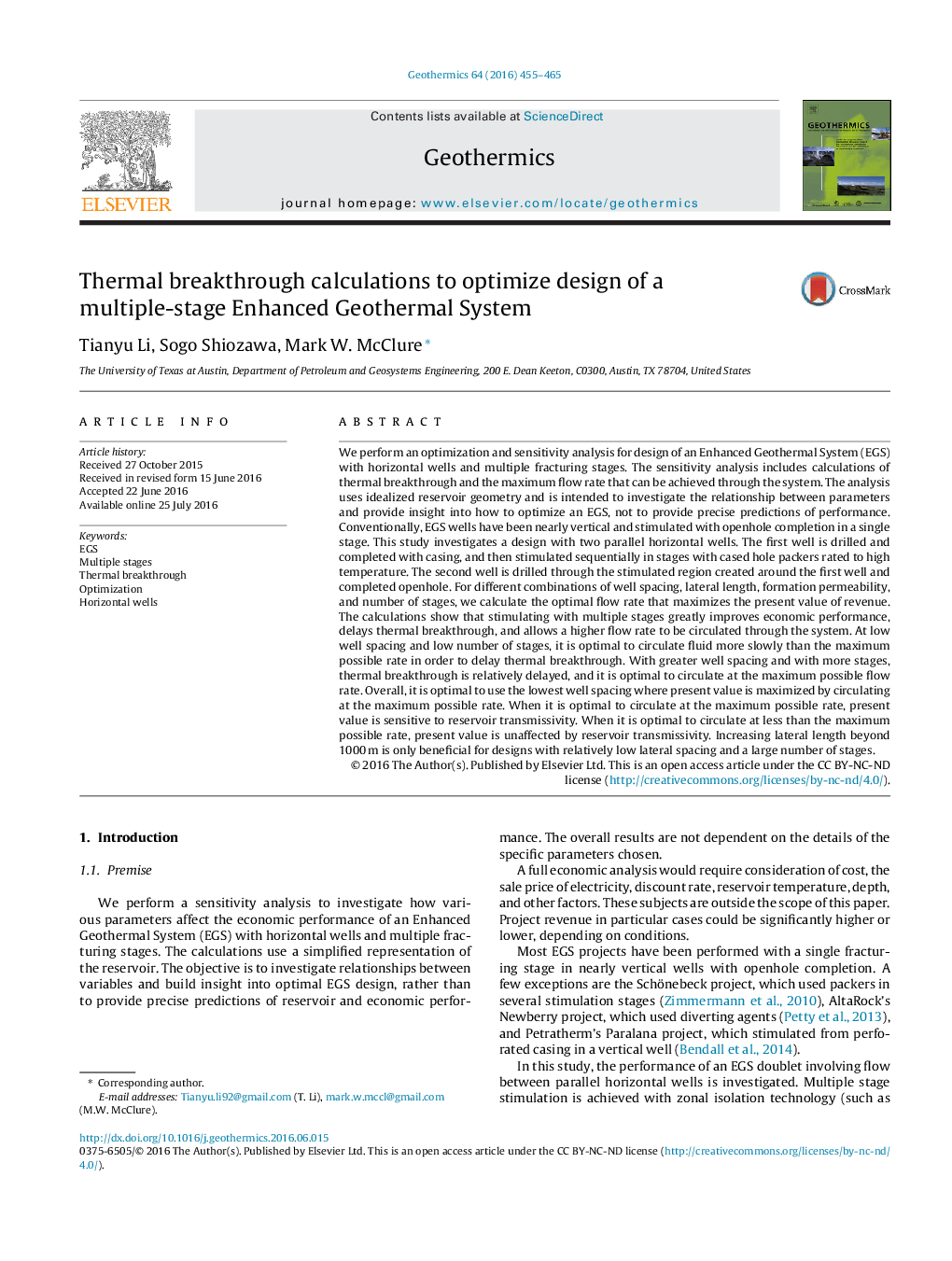| کد مقاله | کد نشریه | سال انتشار | مقاله انگلیسی | نسخه تمام متن |
|---|---|---|---|---|
| 8088883 | 1521905 | 2016 | 11 صفحه PDF | دانلود رایگان |
عنوان انگلیسی مقاله ISI
Thermal breakthrough calculations to optimize design of a multiple-stage Enhanced Geothermal System
ترجمه فارسی عنوان
محاسبات پیشرفت های حرارتی برای بهینه سازی طراحی سیستم چند مرحله ای ژئوترمال پیشرفته
دانلود مقاله + سفارش ترجمه
دانلود مقاله ISI انگلیسی
رایگان برای ایرانیان
کلمات کلیدی
موضوعات مرتبط
مهندسی و علوم پایه
علوم زمین و سیارات
ژئوشیمی و پترولوژی
چکیده انگلیسی
We perform an optimization and sensitivity analysis for design of an Enhanced Geothermal System (EGS) with horizontal wells and multiple fracturing stages. The sensitivity analysis includes calculations of thermal breakthrough and the maximum flow rate that can be achieved through the system. The analysis uses idealized reservoir geometry and is intended to investigate the relationship between parameters and provide insight into how to optimize an EGS, not to provide precise predictions of performance. Conventionally, EGS wells have been nearly vertical and stimulated with openhole completion in a single stage. This study investigates a design with two parallel horizontal wells. The first well is drilled and completed with casing, and then stimulated sequentially in stages with cased hole packers rated to high temperature. The second well is drilled through the stimulated region created around the first well and completed openhole. For different combinations of well spacing, lateral length, formation permeability, and number of stages, we calculate the optimal flow rate that maximizes the present value of revenue. The calculations show that stimulating with multiple stages greatly improves economic performance, delays thermal breakthrough, and allows a higher flow rate to be circulated through the system. At low well spacing and low number of stages, it is optimal to circulate fluid more slowly than the maximum possible rate in order to delay thermal breakthrough. With greater well spacing and with more stages, thermal breakthrough is relatively delayed, and it is optimal to circulate at the maximum possible flow rate. Overall, it is optimal to use the lowest well spacing where present value is maximized by circulating at the maximum possible rate. When it is optimal to circulate at the maximum possible rate, present value is sensitive to reservoir transmissivity. When it is optimal to circulate at less than the maximum possible rate, present value is unaffected by reservoir transmissivity. Increasing lateral length beyond 1000Â m is only beneficial for designs with relatively low lateral spacing and a large number of stages.
ناشر
Database: Elsevier - ScienceDirect (ساینس دایرکت)
Journal: Geothermics - Volume 64, November 2016, Pages 455-465
Journal: Geothermics - Volume 64, November 2016, Pages 455-465
نویسندگان
Tianyu Li, Sogo Shiozawa, Mark W. McClure,
